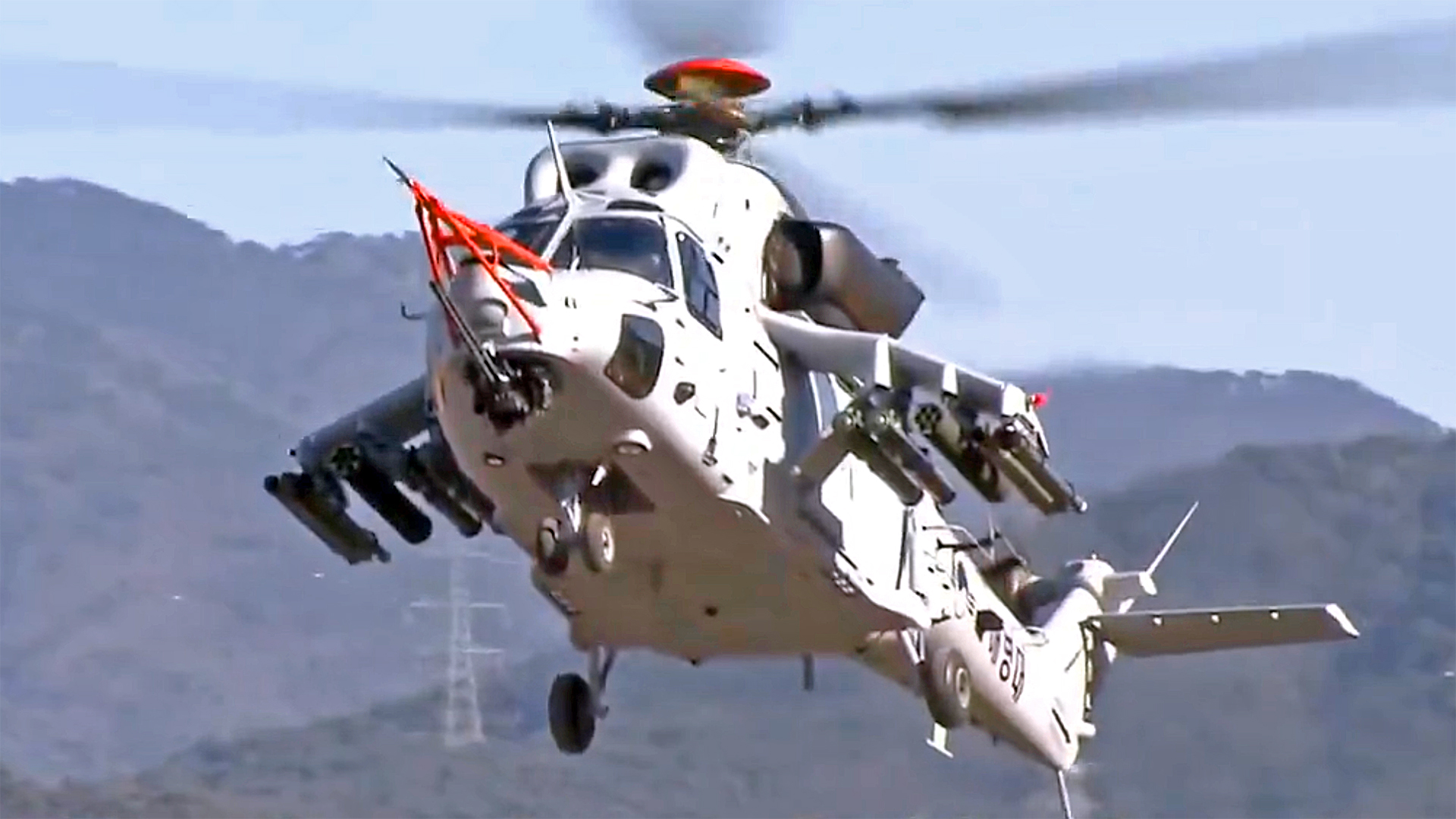South Korea’s locally developed Marine Attack Helicopter (MAH) recently made its first flight, and a video now provides us with a clearer look at its extensive modifications. With its heavy load of armament carried on relatively huge stub wings, the MAH also stands out for its striking resemblance to the modified Aérospatiale Puma that played the role of the Soviet Mi-24 Hind gunship in the Rambo movie franchise of the 1980s, and that’s not entirely coincidental.
The first flight of the Korea Aerospace Industries (KAI) MAH was announced last week by the Defense Acquisition Program Administration (DAPA), which manages South Korean defense procurement. However, the milestone event occurred back on Dec. 17, the manufacturer confirmed.
KAI added that the first flight lasted around 20 minutes and involved tests of the helicopter’s flight control performance and stability. This included “taxiing, taking off, and performing hovering, circling, forward/backward/left/right flights, S-shaped circling flights, and maximum horizontal flight at an altitude of approximately 30 meters [100 feet],” KAI said.
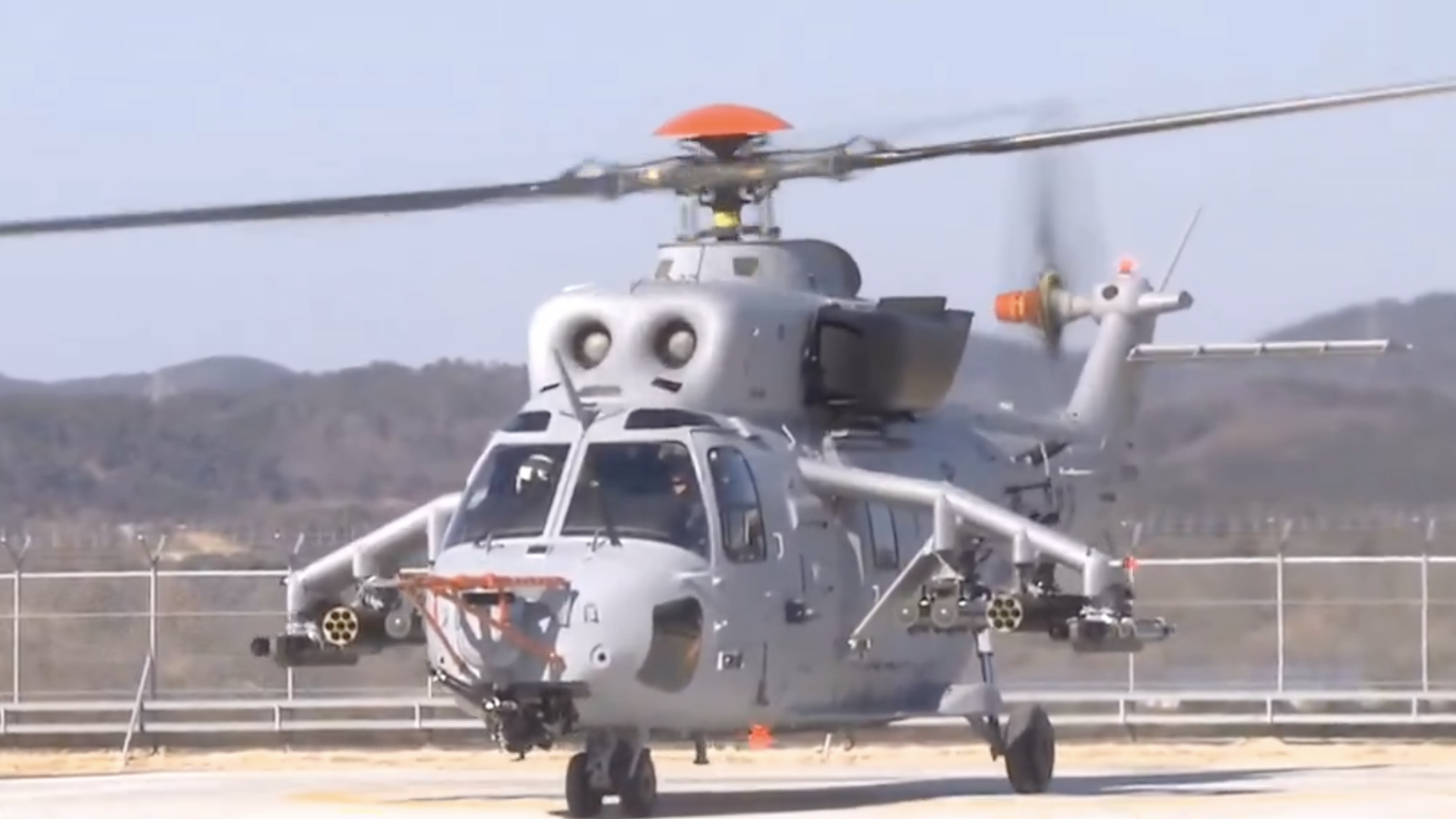
The most striking features of the MAH relate to its extensive armament, tailored for its missions of amphibious assault, close air support, and coastal defense.
A 20mm three-barrel gun is mounted in a turret below the nose (since this is a prototype, the nose also sports a prominent orange-painted boom for test instrumentation). Attached to the sides of the fuselage are stub wings with three weapon hardpoints on each. In the video of the prototype helicopter, these carry — from inboard out — a pair of tube-launched anti-tank guided missiles, a seven-round pod for unguided rockets, and a pair of containerized air-to-air missiles (AAMs). Meanwhile, an electro-optical/infrared turret is fitted at the front of the nose.
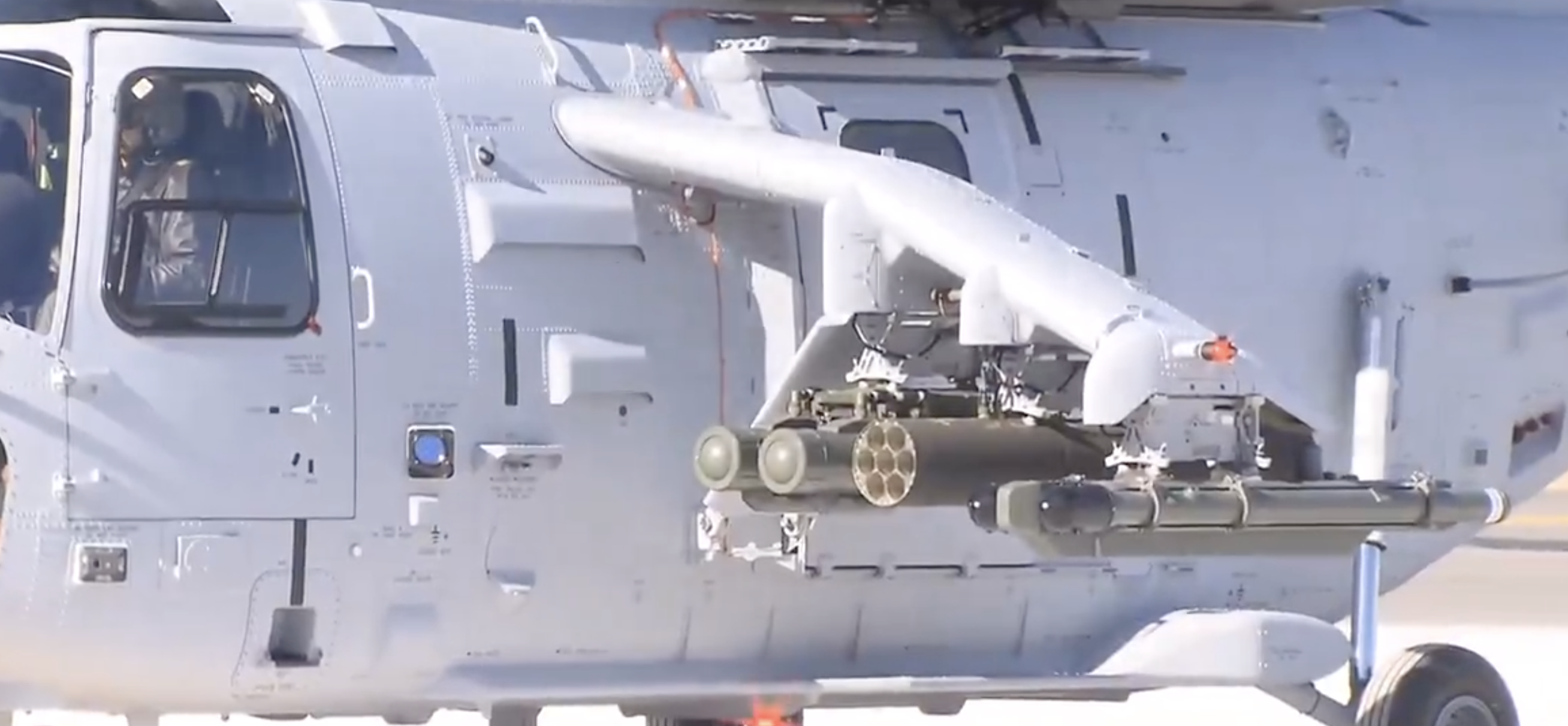
Previous reports suggest that the missiles carried are Cheongeom ATGMs (up to eight that can be carried, in four-round clusters), which are locally produced by Hanwha Aerospace, and MBDA Mistral AAMs. However, DAPA has in the past said that it expects the MAH to be armed with locally made AAMs, which would be “the first time that a domestically developed helicopter has an air-to-air missile capability.” It’s unclear if these plans have now been superseded by integrating the tried-and-tested Mistral, which is also found in the other helicopter-launched applications, as seen in the video below.

At least some of the weapons systems on the MAH have already been integrated on the Light Armed Helicopter (LAH-1) Miron, another locally developed rotorcraft, but based on the Airbus H155. The Miron was developed for the Republic of Korea Army (ROKA) and the first examples were delivered to that service late last month.
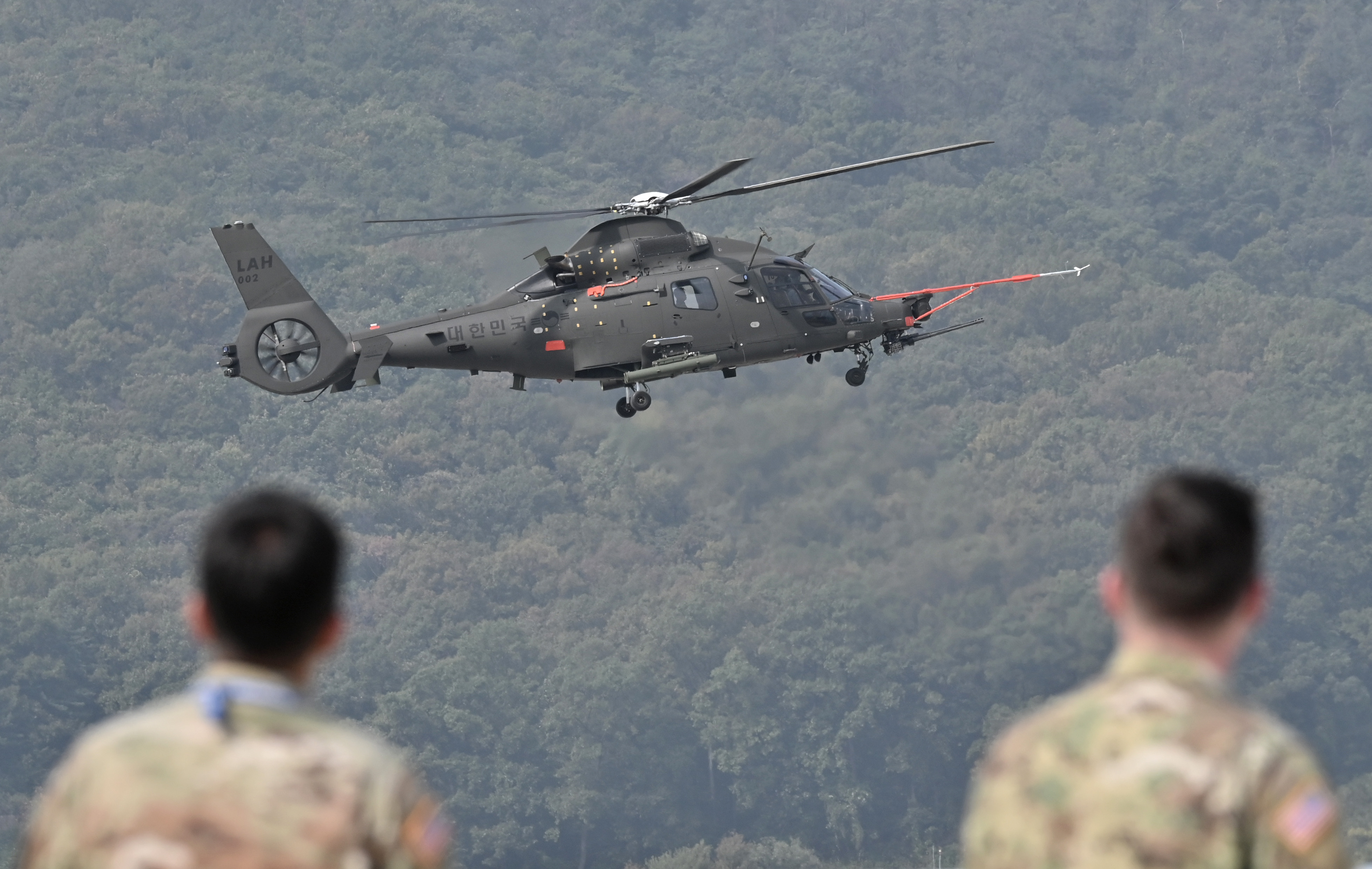
Less obvious are other adaptations for the MAH’s combat role, including its extensive self-protection suite, which includes missile warning sensors on the sides of the nose, and laser warning sensors on the sides of the cockpit.
On the flight deck, the crew of the MAH is provided with a fully integrated glass cockpit, which includes target acquisition and designation sights (TADS), a stores management computer, helmet-mounted displays, and night-vision goggles capability.
Power for the MAH is provided by a pair of General Electric/Hanwha Aerospace T700-701K turboshaft engines each developing 1,855 shaft horsepower, with full-authority digital engine (FADEC) to optimize performance.
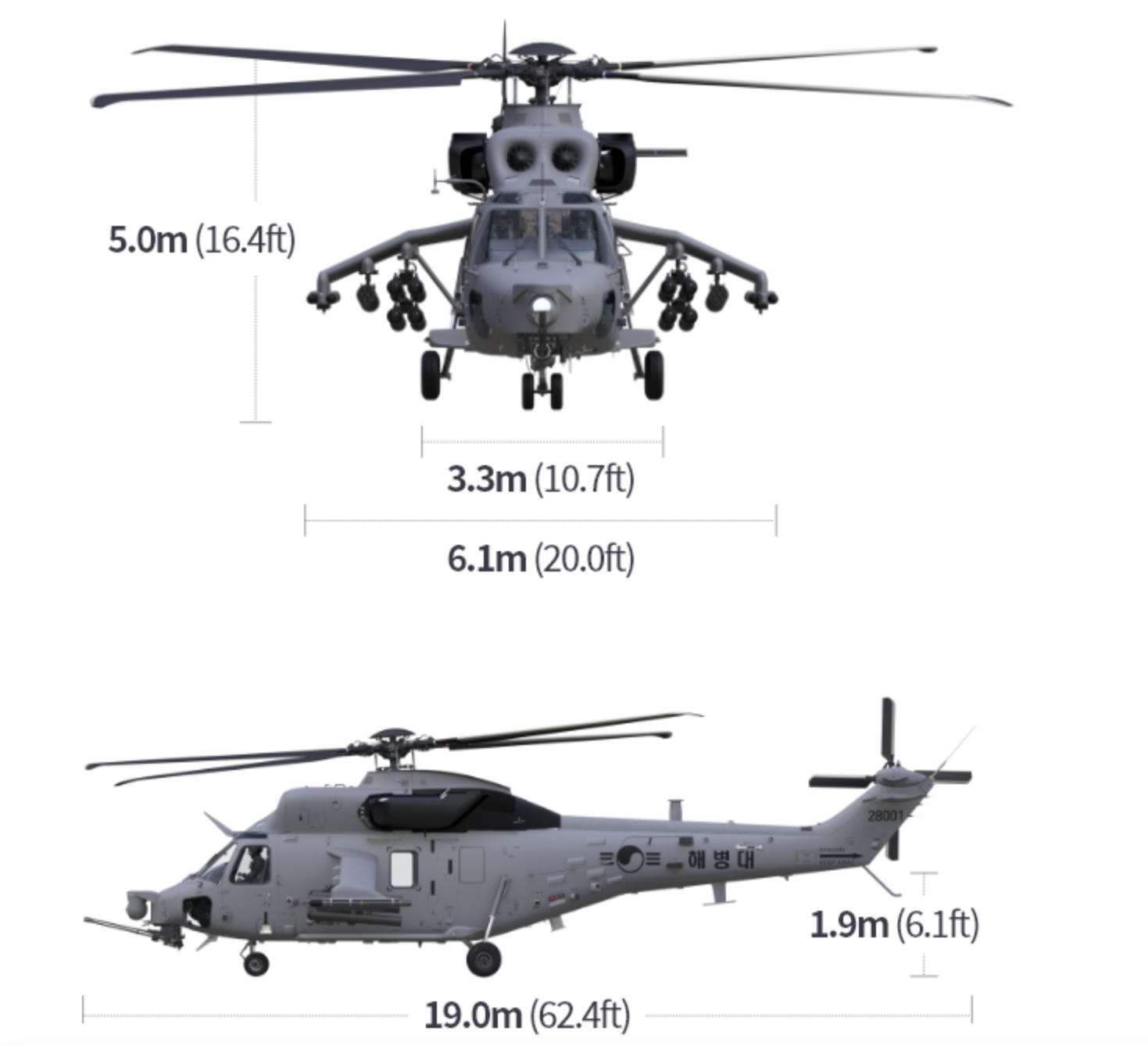
Befitting its maritime role, the MAH is extensively protected against seawater corrosion, is outfitted with flotation devices for emergency landings on water, and has folding main rotor blades to reduce its deck ‘footprint.’
Overall, the up-armed MAH does look reminiscent of the modified Puma that was used in at least two of the Rambo movies, playing the role of the Soviet Mi-24. In fact, that shouldn’t be entirely surprising, as some of the design DNA from the Puma was fed into the South Korean helicopter program early on in its development.
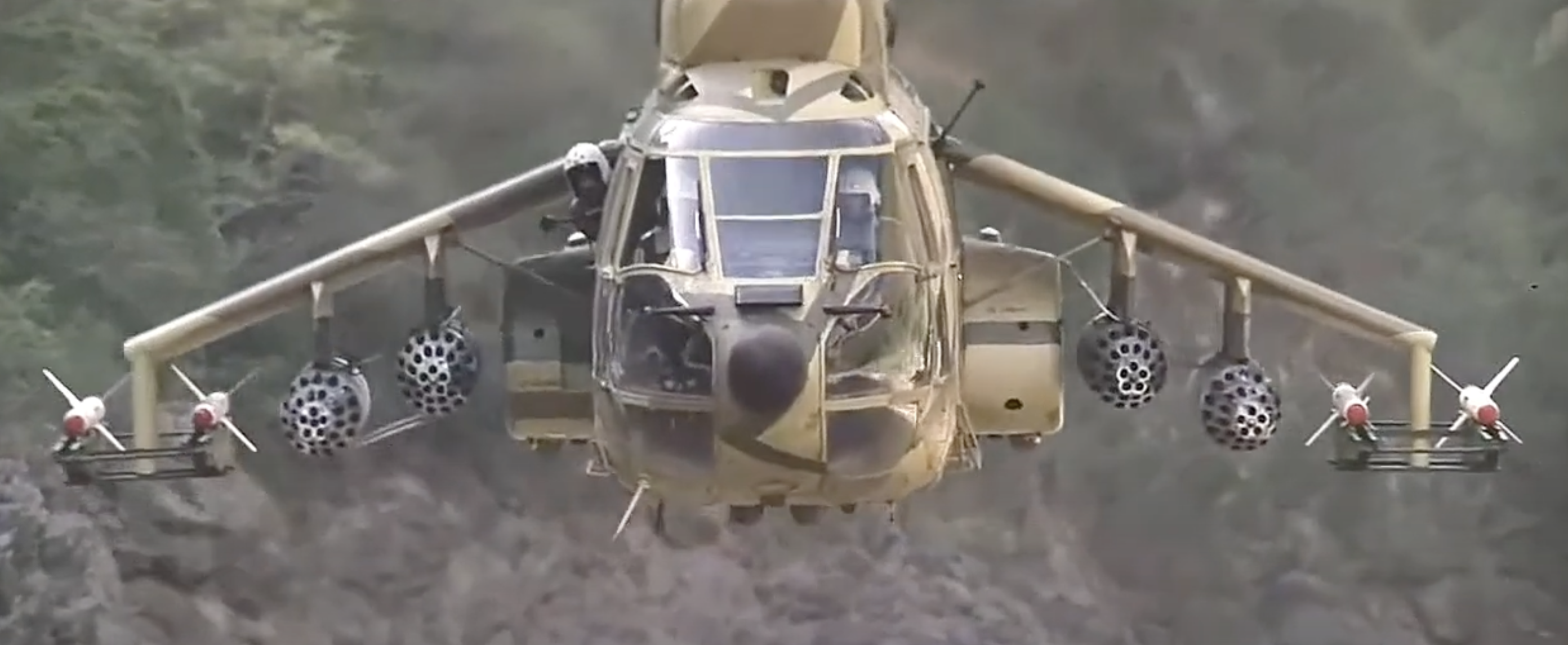

The MAH is the latest expression of the Korean Utility Helicopter (KUH) program, which was launched back in 2006 as a joint venture involving KAI, Eurocopter (now Airbus), DAPA, and the Korean Aerospace Research Institute.
The involvement of Eurocopter saw the KUH take as its conceptual starting point the AS532 Cougar — an evolution of the earlier Puma design.
The first helicopter to emerge from this effort was the Surion, which was rolled out in July 2009 and made its first flight in March 2010.

This became Korea’s first domestically designed and produced helicopter, with the KUH-1 Surion being ordered by the Republic of Korea Army (ROKA), primarily to replace its fleet of UH-1H Huey helicopters used for troop lift, search and rescue, and liaison. The KUH-1 entered service in 2012 and also led to a dedicated medical evacuation version, the KUH-1M, with medical equipment, a weather radar, an external winch, and auxiliary fuel tanks.
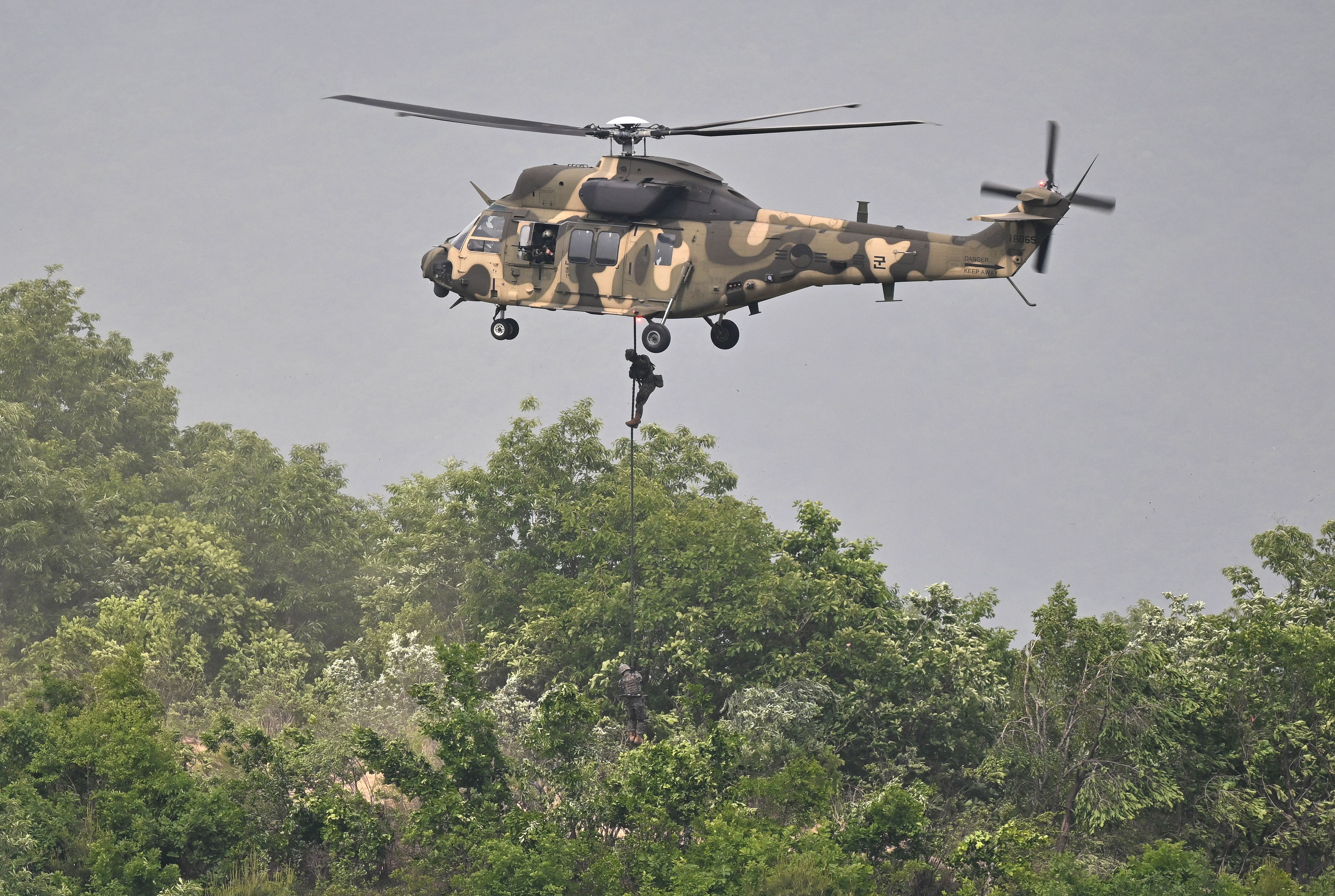
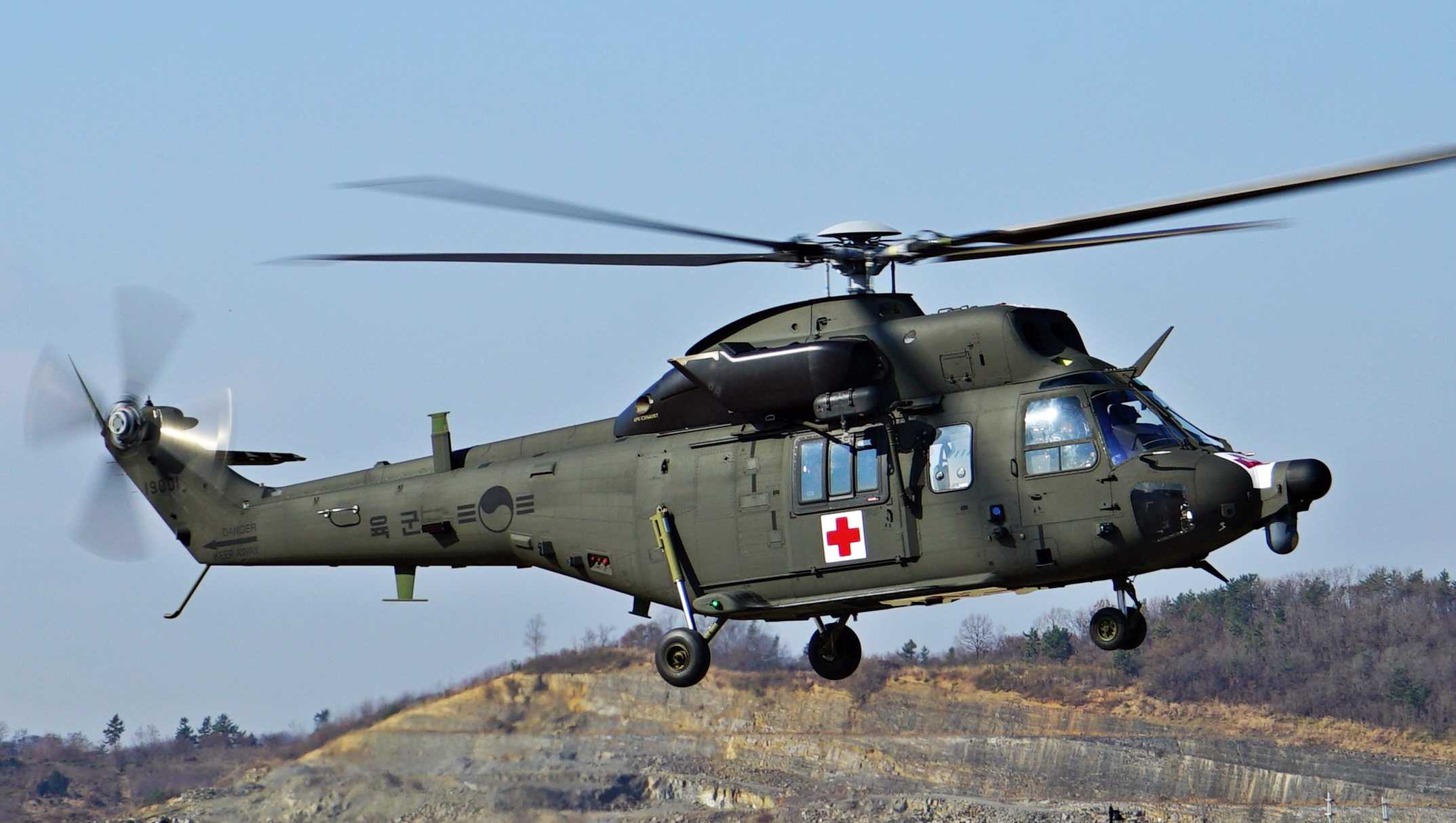
The KUH-1 was followed by the MUH-1 Marineon for the Republic of Korea Marine Corps (ROKMC), and the KUH-1CG variant for the Korean Coast Guard, while further civil versions have been produced for the National Emergency Management Agency, the Korea Forest Service, and the National Police Agency. The helicopter has also been offered for export, so far without winning any orders.
In October 2022, DAPA awarded KAI a $300-million contract to develop the MAH, as an armed version of the MUH-1 Marineon.
By the end of last year, KAI had completed production of the first three MAH prototypes and the first ground tests of a prototype began in October 2024.
DAPA has said that it expects 2025 to see the MAH undergo full-scale test and evaluation, including many more flight tests, with development planned to be completed in the second half of 2026.
Once in service, the MAH will be able to provide powerful fire support and escort for ROKMC Marineon helicopters, including during amphibious assault operations.
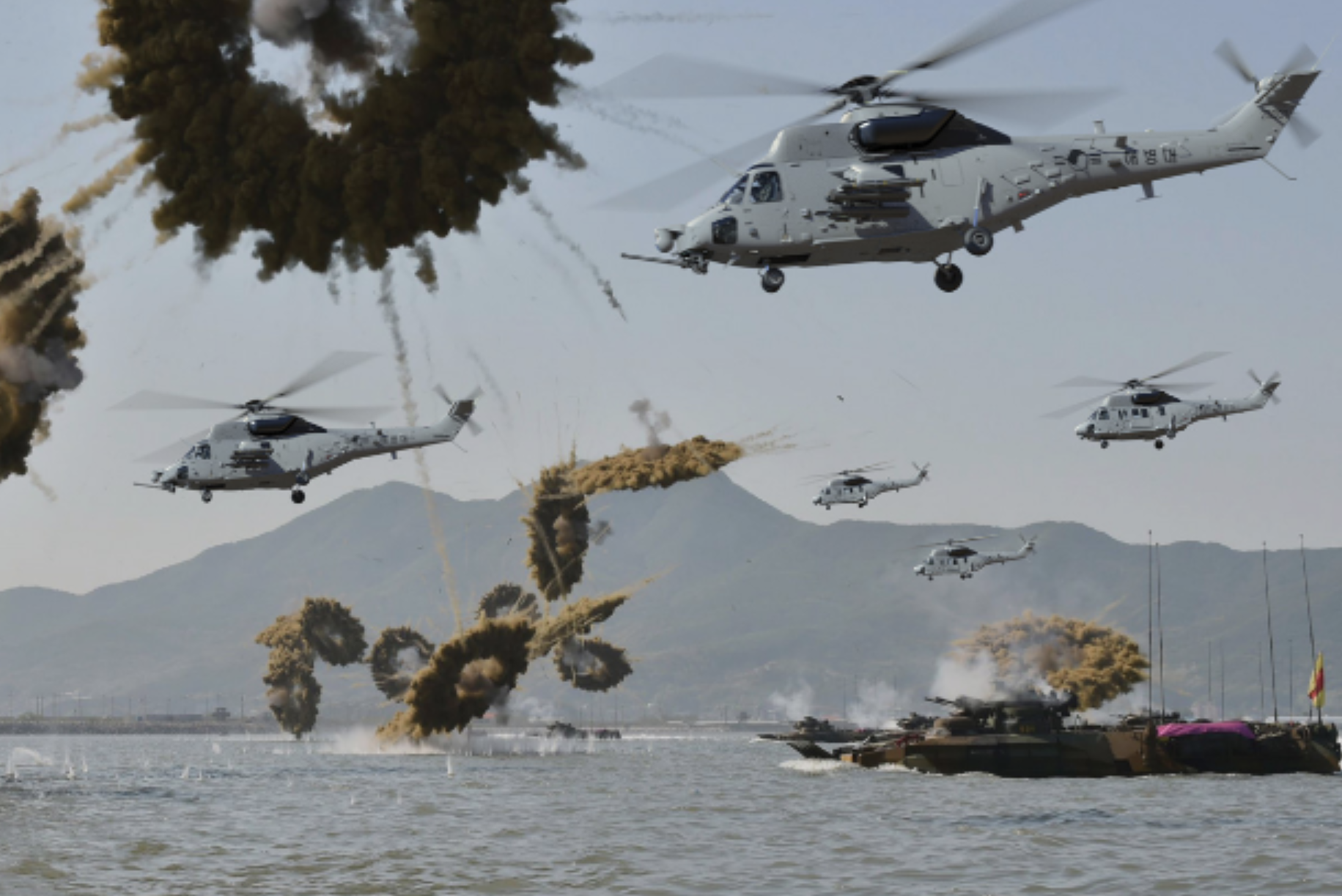
The ROKMC has only recently begun to re-emerge as an aviation operator within the South Korean military.
Although the ROKMC operated light fixed-wing aircraft back in the 1950s, the service was disbanded and its assets were integrated into the ROK Navy (ROKN) in 1973.
In 1987, the ROKMC was reestablished but it would not be until 2014 that it was permitted to establish an aviation component. At this point, it was planned to introduce 40 helicopters within three squadrons: two equipped with assault helicopters and one with attack helicopters. To furnish the assault squadrons, 30 MUH-1 Marineon helicopters were ordered, suggesting that the service would eventually get (at least) 10 MAH for its attack squadron. Since then, however, Seoul has placed orders for 24 of the MAH version.
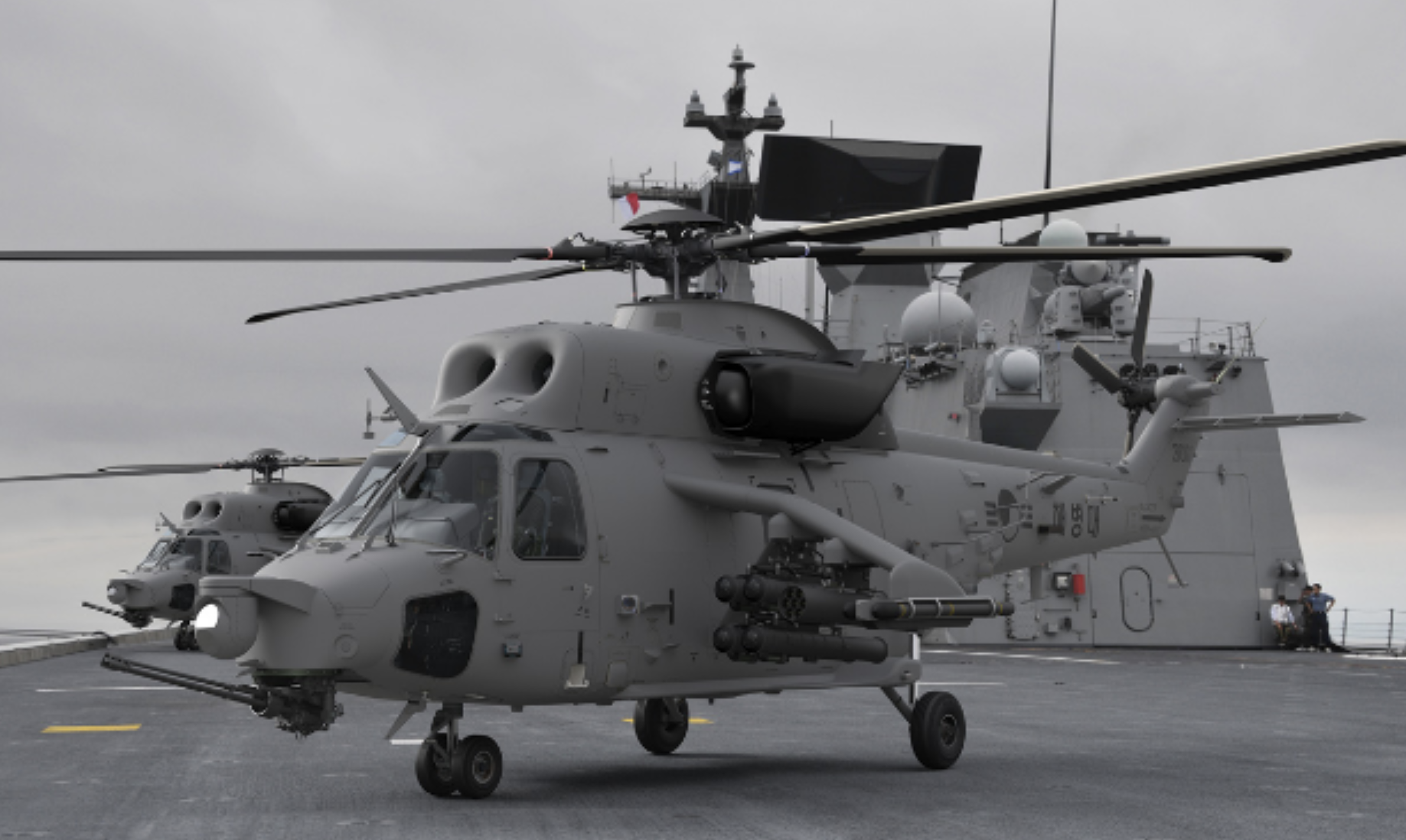
The introduction of the MUH-1 Marineon was not entirely smooth. The first two examples were officially inducted by the ROKMC in January 2018, but one of these crashed in July of the same year, after a rotor blade sheared off followed by the detachment of the entire rotor head. This led to a grounding of the entire Surion fleet during which cracks were discovered in the rotor masts of other examples. A thorough inspection was made of all the rotor masts and ROKA KUH-1s had returned to limited flying operations before the end of 2018.
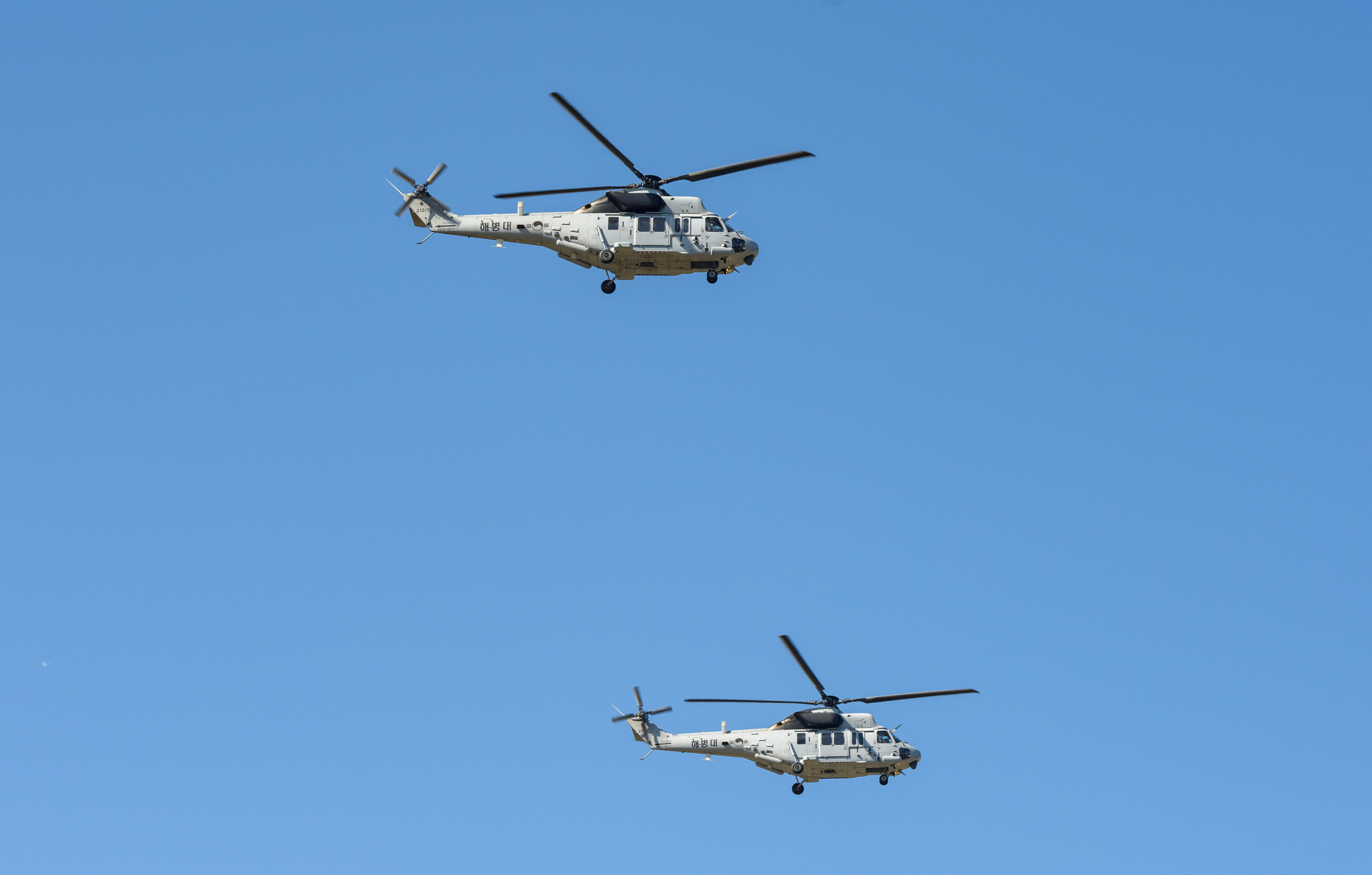
Despite this setback, the Surion program has continued, including the development of the MAH version.
As well as adding new helicopters to the ROKMC, South Korea is generally investing more in amphibious warfare as part of a broader expansion of its naval power, which also includes new submarines and heavily armed surface combatants, all part of a more hawkish approach toward North Korea. The two Dokdo class assault ships are the most powerful expressions of these growing amphibious capabilities and will be very suitable hosts for the MAH helicopters once these enter service. Although optimized for attack missions, the MAH also looks to retain its cabin, suggesting that it can also transport troops when required, much like the Mi-24 series. The Marineon can carry up to 11 troops and, even if some of the internal space is lost in the new version, this should ensure the MAH remains a very versatile platform.
Next up, the ROK Navy could be set to receive a mine countermeasures version of the Marineon, reflecting the need to defeat North Korea’s extensive mine warfare program. Work on the mine countermeasures Marineon is expected to be completed before the end of 2026. With this in mind, the extensive development path of the South Korean helicopter looks set to continue.
Contact the author: thomas@thewarzone.com
